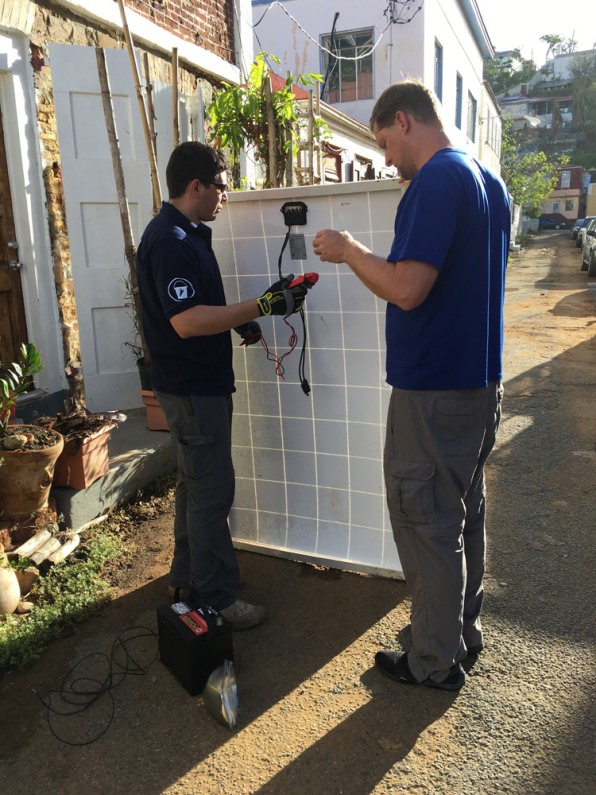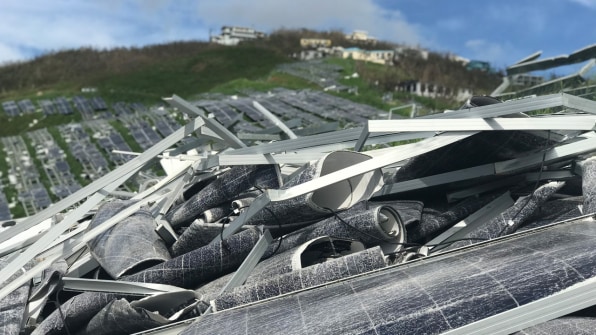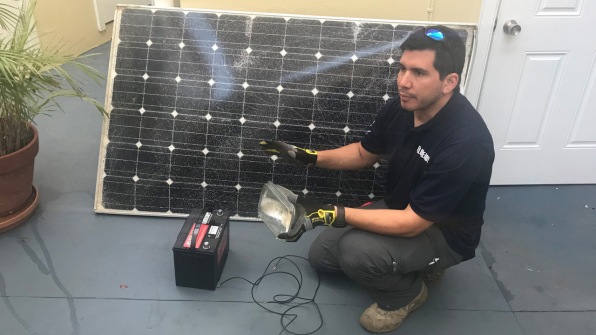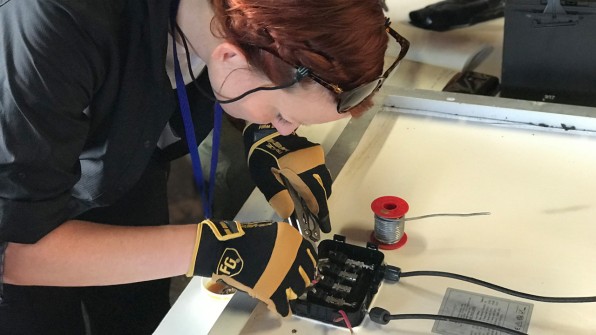Diy Logo Design Maker Tool
When Hurricane Maria hit the U.S. Virgin Islands–12 days after Hurricane Irma made landfall there as a Category 5 storm–thousands of solar panels were ripped off roofs and off racks in solar farms. The power grid was dead. But when a team of makers saw the broken panels, they realized that they could be hacked into something useful.

"I looked up into the hills and saw all these solar panels destroyed by the hurricane, and having worked with a ton of solar panels–especially in Iraq–I realized that they're still making voltage," says Brad Halsey, who previously worked with the U.S. military doing, as he puts it, "the MacGyver thing," running around battlefields identifying problems and creating DIY solutions.
Halsey, who now runs a company teaching others to do the same type of work, traveled to the Virgin Islands in early October along with a crew from Field Ready, a nonprofit that that uses the tools of the maker movement, such as 3D printing, CNC machines, and Arduino boards, and tech know-how, to build solutions on site in disaster zones while people there are still waiting for traditional aid.

When the team arrived on the islands, their first step was to join locals to identify the most urgent problems out of a long list of challenges. "We go in with sort of a design perspective," says Eric James, co-founder and director of Field Ready. "We didn't go there saying, 'Hey, we're going to make this,' because we don't know if that's what's needed. What we found as a unifying problem was a lack of electricity."
No one could charge cell phones, or use a modem to get online to reach relatives or register with FEMA. There was no light at night. But the team realized that by connecting the solar panels to 12-volt batteries from cars that had also been destroyed in the storm, they might be able to create solar-powered lights and phone charging stations. The idea went from a hypothesis to reality in half a day.
"We did an experiment with [a panel] that night, the next morning put it out in the light, and sure enough, it worked," says James. "So we designed a whole program to put these damaged solar panels back into use."

It's a way to quickly intervene while people living on the islands wait for the longer work of rebuilding an entire electric grid. "When it comes to power, I think most of the governments have said we plan to restore it by the end of the year . . . that's really not going to happen," James says. "Maybe six to 12 months. What will happen is the rich places will get it first, and it will slowly go off from there. In this particular response, our solar panel power project is meant to fill that gap for that six to 12 months while the regular power comes back."
The team is now soliciting ideas for more solutions from the broader maker community around the world. A recent call to action outlines key problems. Residents need clean drinking water, for example, and the call to action outlines what they have: plenty of seawater, upcycled solar panels, and a handful of tools in a local workshop. In theory, someone will suggest a clever, low-cost solution for desalination.
The document also outlines other challenges–how to cook when there's no electricity and little gas; how to safely store water, food, and medicine; how to make metal replacement parts without standard equipment; how to communicate when cell phone towers are down and internet access is sparse; how to clean and dry belongings that were trashed in the hurricanes; and how to control traffic when street lights are dead.

In some cases, designs that solve these problems might already exist elsewhere. But Field Ready's model focuses on making DIY, local solutions for a few reasons. It's a way to avoid the bottlenecks of a long supply chain coming from other countries. If the designs use existing local resources, they're cheaper. And by building the solutions with people who live in disaster zones, it can also create skills and longer-term jobs.
Field Ready is working with a local nonprofit called My Brother's Workshop that has a maker space and an ongoing program to train at-risk youth. "If you imagine a maker space there, and then grassroots, ground-up teaching the population how to 3D print, and use CAD, and how to code and make the solutions that way, suddenly you're a net positive post-hurricane," says Halsey. "You're providing an education, maybe spawning little micro-businesses, and potentially improving resumes. That's the ultimate goal."
The team is currently raising money for the work through a GoFundMe campaign, and after new solutions are proposed, plans to return to the Virgin Islands to work with locals to implement them.
Diy Logo Design Maker Tool
Source: https://www.fastcompany.com/40482782/post-hurricane-makers-are-designing-diy-solutions-for-disaster-relief
Posted by: schmalzfrook1993.blogspot.com

0 Response to "Diy Logo Design Maker Tool"
Post a Comment